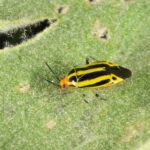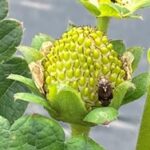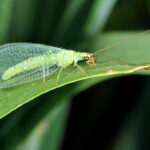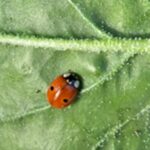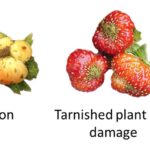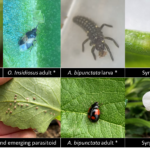Submit your content ideas for the 2026 Indiana Horticulture and Small Farm Conference. Do you want to hear from someone in particular or about a specific topic at this year’s newly combined conference? If so, please scan the QR code or follow the link below to submit your suggestions. Feel free to submit yourself as[Read More…]
Submit your content ideas for the 2026 Indiana Horticulture and Small Farm Conference. Do you want to hear from someone in particular or about a specific topic at this year’s newly combined conference? If so, please scan the QR code or follow the link below to submit your suggestions. The survey will be open until[Read More…]
Last week I had the wonderful opportunity to visit a local grower who installed an insectary strip adjacent to their high tunnel last year. They will be hosting a field day in June, so I wanted to take a sneak peek and see how the plants (and insects) were doing. The plants are progressing well,[Read More…]
Spring is in full swing in our research high tunnels at Purdue. Overwintering strawberries that we planted in September are now in full bloom and fruits are being harvested. But as temperatures increase and crops become more productive, we also see the emergence of various insect pests. Aphids, amongst other soft-bodied insect pests (e.g., whiteflies,[Read More…]
Lygus is a genus of insects within the family Miridae (Order: Hemiptera, piercing-sucking true bugs) that often feed on common horticultural crops. These small insects have rather large eyes, heavily patterned, neutrally colored wings, and long spindly antennae. The diet of Lygus bugs, as they are colloquially called, is incredibly diverse ranging from cotton and[Read More…]
As we head into the strawberry season, I anticipate more questions from growers when it comes to pests that directly damage the fruit. One that was reported recently was the Strawberry sap beetle. This beetle belongs to the family Nitidulidae, which are broadly referred to as sap or picnic beetles. The Strawberry sap beetle overwinters[Read More…]
Lacewings are a group of insects commonly found in Indiana and throughout the world. There are several species, but the most common that you will see in Indiana include the green lacewing and the brown lacewing. They belong to a unique order of insects, Neuroptera, and are commonly referred to as aphid lions. The life[Read More…]
The Two-spotted lady beetle, Adalia bipunctata, is a common insect predator, meaning it feeds on other, smaller bugs. Native to North America and Europe, the Two-spotted lady beetle is distinguished from other lady beetles by its oblong shape and two large black spots on either of its back, as well as its large white spots[Read More…]
Overwintering strawberries in high tunnels can jumpstart plant growth in the spring and protect developing flowers from frost damage and disease. However, this protected environment is also ideal for some pests, like spider mites and aphids, that can successfully overwinter and build their populations. We conducted an experiment on ‘Chandler’ strawberry where it was grown[Read More…]
Growing strawberries under high tunnels can extend the harvest season, provide protection against rain, frost, and disease, and improve overall yield and fruit marketability. Pest pressure, however, can be higher on protected culture strawberry compared to the open field. This is especially true for small, soft-bodied pests such as spider mites, aphids, and thrips. Even[Read More…]



